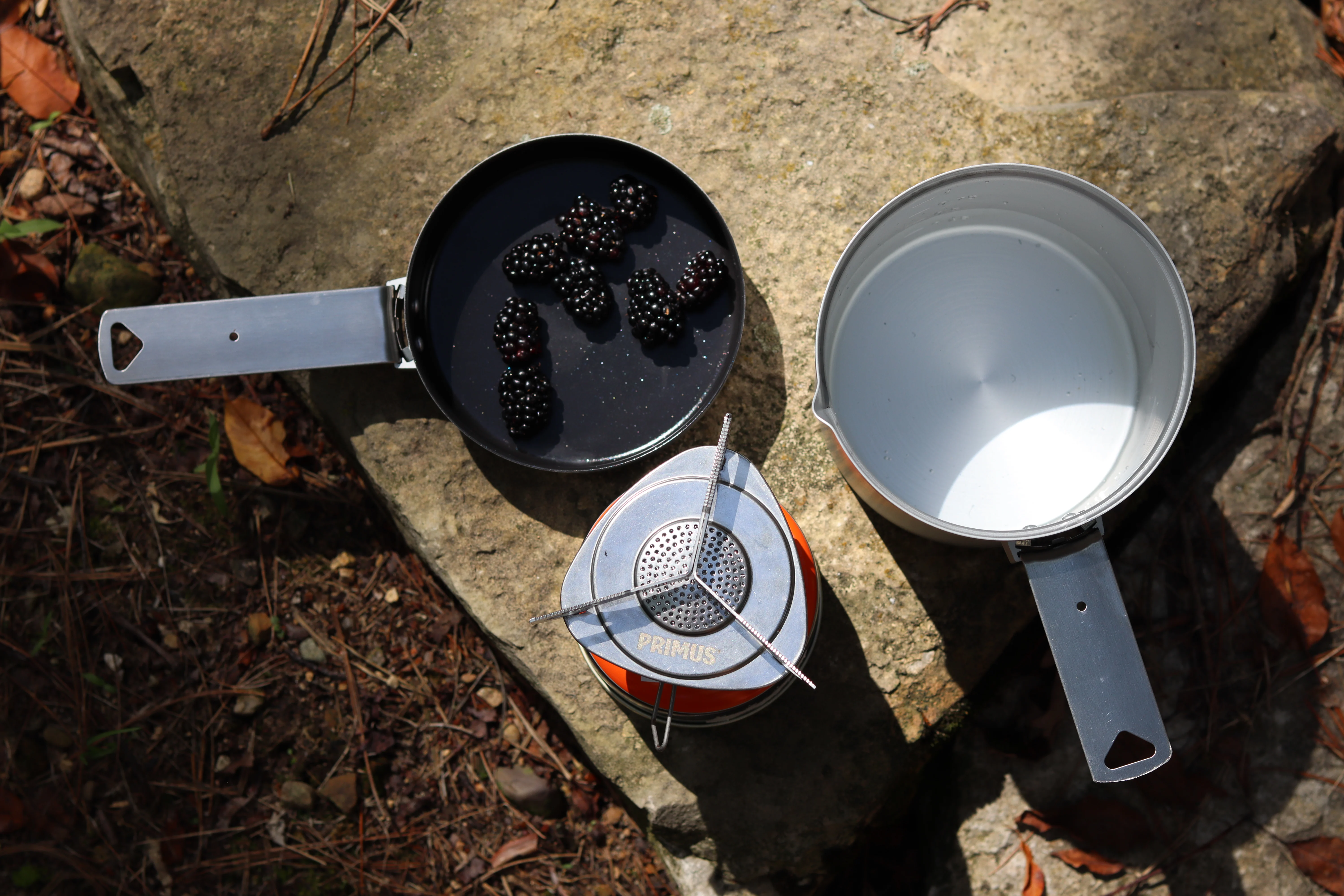There’s more to backcountry cooking than boiling water. After all, dehydrated meals and oatmeal get old after a few days. Many backcountry hunters, anglers, and campers have shared the disappointing feeling of hiking all day just to return to camp and realize they have to eat freeze-dried mush. The biggest hurdle to better meals is that cooking gear and food are heavy, and extra weight isn't welcome on backcountry adventures.
Luckily, with some creativity, going off-grid doesn't have to mean enduring days of bad food. All it takes is some preparation and forethought to make your backcountry breakfast worth something getting out of your sleeping bag. Don't rely on espresso beans, gel packets, and soggy meals for calories in the bush. Use these six tips to elevate your backcountry cooking game.

1. Research Backcountry Recipes
I’ve had too much cold oatmeal on alpine mornings to ever look at the Quaker Oatman the same way. The good news is that there are many options besides rehydrating processed food. What's even better is that these options are cheaper and far more delicious. They just require some meal planning and out-of-the-box thinking.
The National Outdoor Leadership School has prepped over two million meals in the backcountry during its 50-year existence, and its cookbook is a backcountry kitchen bible. Don’t neglect modern food blogs, either. Fresh off the Grid and others like them have compendiums of trailside recipes you can read for free. Research some basic meals that won't add too much extra weight to your pack and get cooking.
2. Upgrade Your Spice Kit
Don’t confine yourself to just salt and pepper. Instead, spice up your spice kit. Single-serve spice packets, like these chef-curated ones from Spicewalla or generic options from your home grocery aisle, can elevate your mashed potatoes from dorm food to gourmet dining. And quality extra virgin olive oil or avocado oil can add the right amount of sizzle (and calories) to keep you powered through the day.
3. Supplement Your Menu
The best backcountry meal I’ve ever had was wild-caught Alaskan salmon cooked over a driftwood fire. The memory still makes me salivate. We obviously didn’t pack the salmon or rely on catching it, but the fresh fish made all the difference.
Whether you’re in Maine during the blueberry season or the PNW and stumble upon a morel patch, don’t be afraid to forage, fish, or hunt for supplemental meals. Fresh backstrap, duck, trout, or salmon is game-changing in the bush. Just be sure to follow local regulations on foraging, fishing, and hunting.

4. Seek Alternate Refrigeration
I’m not advocating for risking food poisoning, but perishable items often last longer than our modern refrigeration systems lead us to believe. Blocks of cheese, vegetables, and other so-called perishables are more than capable of lasting a few days on the trail with some creative refrigeration.
Seek out cool streams, glacial ice, and shady hollows. Think about how humans used to keep food cold before electricity. Along those lines, don’t limit yourself to beef jerky—anything salted, smoked, or cured is the original backcountry food. Hardy and protein-forward, it’ll power your legs farther than dehydrated slop can carry you.
5. Take Dehydration Into Your Own Hands
I’ve knocked on dehydrated meals enough here to issue a brief caveat. There are some delicious dehydrated meals out there. Itacate makes just-add-water chilaquiles better than anything I’ve produced in my home kitchen. The key? Good food in small batches, which is hard to replicate at scale but possible to replicate in your own kitchen. It’s a whole lot of prep work, but with the aid of a food dehydrator, you can take your home cooking to your campsite and save time on the cooking and cleanup while under the stars.
6. Get To Know Your Equipment
Did you know you can hack MSR’s Whisperlite Stove to a simmer setting perfect for backcountry baking? That Frybake makes a feather-light Dutch oven that’s virtually indestructible and capable of cooking in an open flame. That you can proof a bread dough in the bottom of your sleeping bag and bake a fresh loaf in the morning?
With a bit of imagination and some practice, your backcountry kitchen setup can become a wily sous chef, stretching your ingredients to their fullest potential. Just don’t be afraid to make a mistake. Sure, your morning loaf won’t be to the standard of a French patisserie, but it’ll be warm and delicious, and the scenery will be unmatched. So learn the ins and outs of all your camping gear and brainstorm ways it can take your cooking to the next level.

